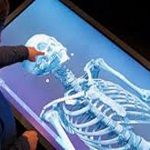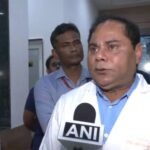Dr Marc Trabsky has received an Australian Research Council Discovery Early Career Researcher Award (DECRA) to examine how forensic imaging technology impacts coronial investigations in Australia
An expert on coronial law, and how law intersects death, Trabsky is the La Trobe Law School’s inaugural recipient of the prestigious fellowship, holding one of four law DECRAs awarded in Australia in 2021.
The project, supported by $448K funding from the Australian Research Council, will explore how forensic imaging technology is used in coronial investigations, and the social and legal effects of virtual autopsies as an alternative to post-mortem dissections.
“Investigations into sudden, unnatural, violent or accidental deaths require coroners to identify the deceased, determine the cause of the death and make recommendations to reduce the occurrence of preventable deaths,” explains Trabsky.
Historically, the invasive autopsy has been key to this investigation. In recent times, the procedure itself has been interrogated, particularly by families of the deceased who oppose post-mortem dissections on religious or cultural grounds.
Virtual technology, in the form of forensic imaging, has entered this contested space, with post-mortem computed tomography (pmCT), post-mortem magnetic resonance imaging (pmMRI) and 3D photogrammetry-based optical surface scanning (3D surface scanning) offering non-invasive examination methods.
“In 2005, the Victorian Institute of Forensic Medicine became the first forensic medical institute in Australia to install a multidetector CT scanner,” says Trabsky. “Since then, every deceased person admitted to the Institute undergoes a whole-body pmCT.”
And while forensic imaging is a viable alternative to post-mortem dissections, little is known about how it impacts coronal practitioners or investigatory outcomes.
Trabsky’s three year research project will address this gap.
“My team will examine the way pmCT has been developed, used, and appropriated in coronial investigations since the late twentieth century,” he says. “We will also consider how virtual autopsies impact the professional lives of coroners and other legal personnel.”
“Ultimately we hope to advance knowledge on the social and legal effects of implementing pmCT in the Australian coronial landscape. Forensic imaging technology is a powerful and transformative agent. A deeper understanding of how it can best be implemented will improve the efficiency, accuracy and cost-effectiveness of these critical investigations.”



